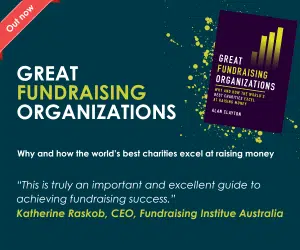The Fundraising Regulator: one year on

Over the last 12 months we have seen the Brexit vote, the election of Donald Trump as US President, the ‘snap’ General Election and, of course, the announcement of Bake-Off moving to Channel 4. It might not quite compare to those seismic events, but there have also been fundamental changes to fundraising regulatory system over that time too.
This time last year the IoF had responsibility for the Code of Fundraising Practice, the FRSB was still operating, and the Fundraising Preference Service proposal was for a single ‘big red reset button’.
Things were about to change. Sir Stuart Etherington’s review had recommended a new system for fundraising regulation, including the new regulator – something that the IoF and many members called for. The former system needed to change. But, did the changes work for charities, donors and the public?
Advertisement
Visible, present and directly involved
I’m firmly of the belief that there’s a lot to be positive about over the last year. Right from the off, the Fundraising Regulator did a great job of reaching out to charities and fundraisers talking about their plans, and more importantly, listening. Hats off to Stephen Dunmore and Gerald Oppenheim – they said that they would engage with the sector and they certainly did, attending and speaking at events up and down the UK. In an independent system of regulation it’s essential to build up trust and a positive relationship between the regulator and those that are regulated. The fact that the Fundraising Regulator has been visible, present, and directly involved with the sector has been widely appreciated.
This isn’t hasn’t just been a superficial exercise. When the Fundraising Regulator said that they would be listening, it may have been that there was some scepticism about whether their consultations would be genuine opportunities to engage, or more of a ‘tick box’ exercise. There have been three main consultations so far:
- on the levy and registration;
- the Fundraising Preference Service;
- and on changes to the Code of Fundraising Practice.
While we are yet to hear the outcome on the Code, we know that the other two consultations did lead to change, most significantly in the changes from the ‘big red button’ to a more specific service that will enable individuals to name any individual charities that they no longer want to receive direct marketing from.
The move to a more considered version of the FPS was welcomed across the fundraising community.
Focus on the donor and the public
Understanding the reasoning for change tells us something important about the Fundraising Regulator’s approach – early on they made it clear that their primary responsibility and focus is for the donor and the public. The FPS needed to change because the original proposition would have provided a poor service to individual donors. That’s not to say that there is a fundamental difference between what donors want and what fundraisers want – very often it’s the same, or at least two sides of the same coin, but knowing the Fundraising Regulator’s starting point is a worthwhile reminder.
The first 12 months with the Fundraising Regulator has given many reasons for optimism that we are getting regulation of the sector right. Of course, that doesn’t mean that everything’s been perfect. I think the Fundraising Regulator probably needs to draw a clearer line between the ‘rules’ in the Code and their views on ‘best practice’, there needs to be more rapid progress on adjudications and recommendations, and some of the public comments by its Chair Lord Grade could be more considered.
It’s also important not to lay everything at the door of the Fundraising Regulator. Charities need to play their part too, and the sector as a whole need to support the Regulator. One of the most important ways to do this is for all charities to ensure that they are paying the regulator’s levy and registering with them.
At the end of the day, this is not a question of half full or empty. The Fundraising Regulator has made an effective start, had a largely successful first year and is in good shape for year two, year three, and beyond.
Daniel Fluskey is Head of Policy and Research at the Institute of Fundraising. He leads the Institute’s policy development and research work, keeping up to date with member priorities, promoting innovation on fundraising and working with key stakeholders, including civil servants and politicians, to make sure fundraising and giving are key priorities for the current and future governments.
- CIOF and Fundraising Regulator publish guidance for the return of in-person events in community fundraising (19 April 2021)



